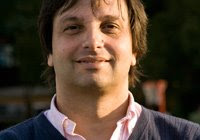What Is Spot or PMS Color?
f a designer needs to match a particular color (a logo color perhaps) in a printed piece or has a limited budget, then spot color is something to consider. Spot colors can also be used alongside process (CMYK) colors for greater flexibility.
To ensure that a printer uses exactly the color that a designer intends, color systems were developed. The most common of the spot color standards is the Pantone Matching System or, PMS as it is more commonly known. All of the modern image-editing, vector-drawing and page-layout programs come with a full library of thousands of Pantone colors as part of the program.
In addition, designers will want to have a set of swatch books that show printed examples of the colors and their codes. Swatches are a more reliable method of matching or choosing colors than doing so on-screen. This is because monitors are illuminated by light behind them which makes colors seem brighter on-screen than they are when printed on paper. Also, colors on a monitor are created with red, green and blue light <"RGB Info"> rather than mixed ink pigments.
Though some may view spot color printing as being much more limited than CMYK printing, there are many interesting possibilities.
Two or more spot colors can be mixed to create interesting colors and effects.
Spot colors can be combined to create duotones, tritones and quadtones that can be very effective and can add some visual interest to otherwise grayscale images.
Unfortunately, it's difficult to proof spot color jobs. Most proofing systems use CMYK-based technology. Some laminated proofs, which work by attaching colored sheets of clear acetate, have some spot colors available but these are often expensive.
Sunday, June 25, 2006
Florida Printing Company Florida Graphic Design Fl. Direct Mailing Services Direct Mailing
I'd never found sucha great explenation. Enjoy it!
What's the Difference Between Engraving and Thermography?
ngraving and thermography are actually quite different from one another but these two printing methods are frequently confused. The printing results can be somewhat similar and can commonly be found on wedding invitations, business cards and the occasional letterhead.
Engraving is a kind of gravure printing wherein paper is pushed against a recessed plate. In engraving, the paper is usually slightly moist. The pressure of another cylinder forces the ink from the recessed area onto the paper. The pressure of the press raises the imprinted area slightly which gives the piece what we recognized as an engraved appearance.
Thermography, also known as the "poor man's engraving" method, is somewhat similar to engraving in result but not process. It's cheaper and easier to produce than traditional engraving which may account in part for it's popularity. Thermography is created by adding a powder to the ink being printed on a paper's surface. The printed piece is then passed under heat and literally cooked together. When heated (it's thermography after all), the ink and powder blend and rise to give a raised effect. Frequently thermography appears even more engraved than some engraved printing.
What's the Difference Between Engraving and Thermography?
ngraving and thermography are actually quite different from one another but these two printing methods are frequently confused. The printing results can be somewhat similar and can commonly be found on wedding invitations, business cards and the occasional letterhead.
Engraving is a kind of gravure printing wherein paper is pushed against a recessed plate. In engraving, the paper is usually slightly moist. The pressure of another cylinder forces the ink from the recessed area onto the paper. The pressure of the press raises the imprinted area slightly which gives the piece what we recognized as an engraved appearance.
Thermography, also known as the "poor man's engraving" method, is somewhat similar to engraving in result but not process. It's cheaper and easier to produce than traditional engraving which may account in part for it's popularity. Thermography is created by adding a powder to the ink being printed on a paper's surface. The printed piece is then passed under heat and literally cooked together. When heated (it's thermography after all), the ink and powder blend and rise to give a raised effect. Frequently thermography appears even more engraved than some engraved printing.
Sunday, June 11, 2006
Soccer World Cup 2006
I wish I could be there in Germany, taking pictures and being able to create great large format pieces, or just images on my computer.
This is the situation: I love all of this wild colors that many teams use in their clothes. I can close my eyes and imagine an nice scene where those beautiful colors will almost show as one of those gorgeous pieces produced by pop artists.
Just a few minutes ago, strolling in South Beach, FL, I saw some of the most impresive pieces I'd ever seen.
If you're a soccer fan, support your favorite team.
But make sure to watch the USA team. They promise A LOT!
See you
This is the situation: I love all of this wild colors that many teams use in their clothes. I can close my eyes and imagine an nice scene where those beautiful colors will almost show as one of those gorgeous pieces produced by pop artists.
Just a few minutes ago, strolling in South Beach, FL, I saw some of the most impresive pieces I'd ever seen.
If you're a soccer fan, support your favorite team.
But make sure to watch the USA team. They promise A LOT!
See you
Subscribe to:
Comments (Atom)



